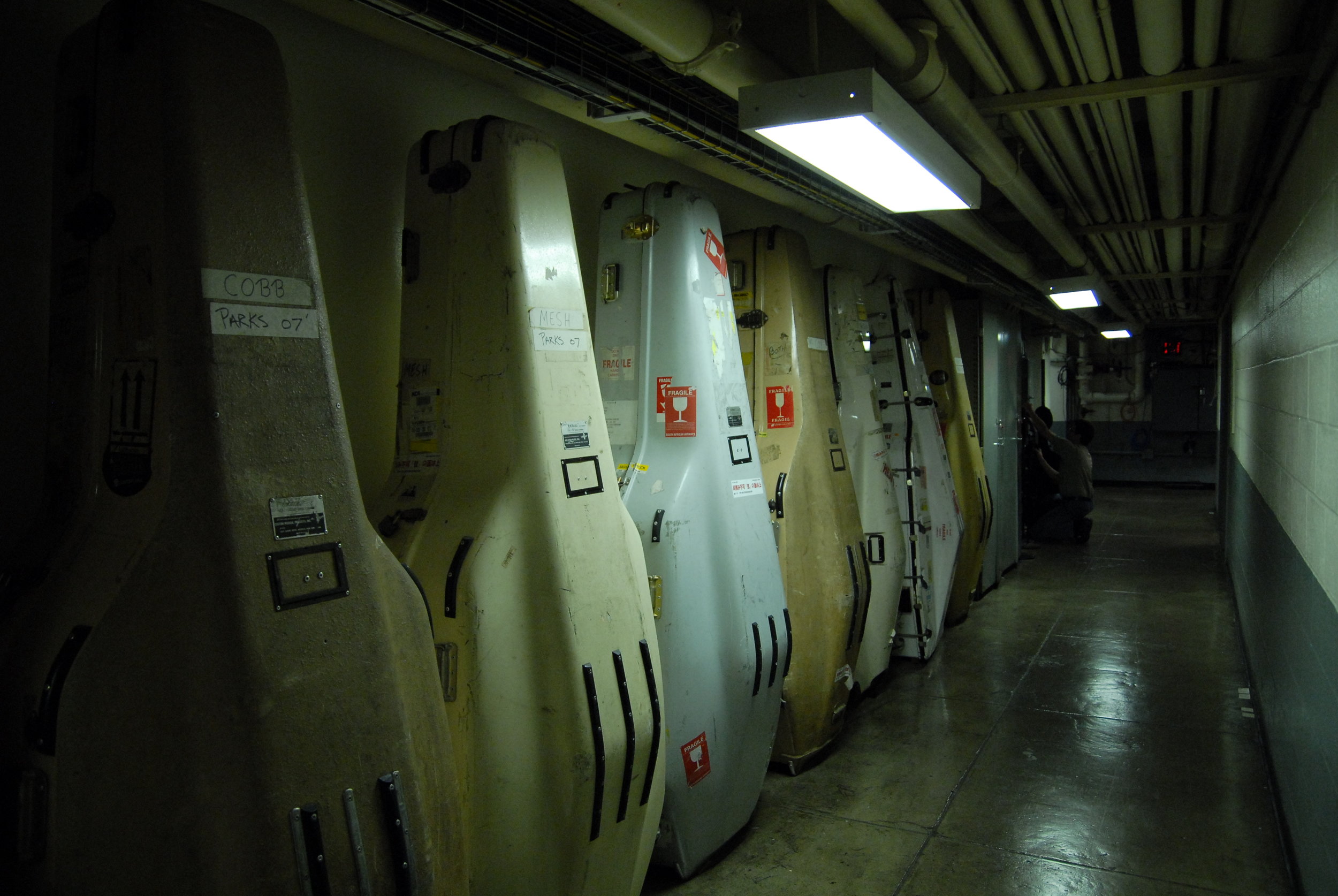An Extra Chorister's Guide to Getting Lost
You trained, applied, auditioned, and were hired to sing in the Met Opera Chorus, but are you ready for the biggest challenge of working at the Metropolitan Opera... finding your way around the building!?!?
by Abigail Mitchell
You just got your first extra chorus contract at the Met—congratulations! You’ve worked your butt off and gotten very lucky and now here you are. You might be a little nervous as well as excited. But what might surprise you is that the most stressful thing about singing in the extra chorus is not trying to make a good impression (you’re a pro!) or making friends with the regulars (they’re nice!). No, the most stressful thing—by far—about being an extra chorister is figuring out where to go.
An extra chorister must present herself in only a small few of the Met’s myriad locations: List Hall, the costume fitting room, the dressing room, the stage. There’s a place called “the hardwood” and another called “the rear wagon” and these may or may not actually be the same thing. Finding the cafeteria is helpful, but not obligatory, though locating at least one restroom is. At your audition for the chorus, volunteers from the full-time chorus were probably on hand to walk you from the waiting area to List Hall (and—crucially—back again afterwards). Similarly, on your first day, Daniel Hoy 1 will probably meet you at the stage door and show you to the room where you’ll fill out your HR paperwork.
After that, you’re on your own. Considering the small number of places an extra chorister needs to go, you would think that wouldn’t be so bad, that it wouldn’t take that long to get one’s bearings and find those places. You would be wrong.
I was disadvantaged from the start because I have something of a history of getting lost. When I first came to New York for auditions, I walked back and forth along 54th Street between 8th Avenue and Broadway, despairing that there was no sign marked “Nola” 2 . A few years later, still in the pre-cell-phone universe, I went on a run in Rome, failed spectacularly at “keeping track of where I turn”, and ended up having to go to a police station to look up the address of my hosts. This dubious history of wayfinding did not set me up for success at navigating the Metropolitan Opera House. Clean lines and sweeping curves of the façade and foyer notwithstanding, the Met resembles nothing more than a rabbit warren or an ant hill, with dozens of workers scurrying to and fro in endless diverse tasks. Everyone except you seems to know exactly where they are going.
The best thing to do in the beginning is simply follow other choristers around. You can either try to be subtle about it or just admit that you don’t know where the heck you are and can you please just tag along with them? Eventually you’ll memorize a route from at least one place (say, the stage door) to another (say, List Hall). For a while you breathe easy, until one day when the loading dock is blocked off or the lobby is closed for an event and you find yourself cut off from the one path you know.
You will not be aided by signage, of which there is precious little, or by niceties such as elevators that go to all floors. Most recently I found myself in an elevator which did not go to the 2nd floor, though it seemed to go to all the others (I wouldn’t be surprised if the elevators, like the staircases in Hogwarts, go to different places on different days). Thankfully one of my fellow riders was kind enough to walk me around a narrow and winding hallway to a different elevator which did go to the 2nd floor.
Not to be fooled again, next time I checked the elevator before getting in to make sure that it went to my destination: C level. It did! So down I went, feeling confident. But when I stepped out I found myself in some sort of creepy, deserted basement. Large pieces of lighting equipment were piled around, and after I wandered a bit I discovered—safely at a distance, thankfully—that I must be by the lift, for the floor gave way in a sheer drop off. It was, I’m convinced, the place where the monster in Stranger Things lives.
I started to panic. It was so clearly the wrong place I was hesitant to wander around, but there was no one nearby to help me. I took out my phone—maybe I can send Daniel Hoy a desperate SOS? No reception. Increasing panic clouded my reasoning and for a moment I couldn’t even find the button to call the elevator back. I’ll be stuck here forever! I’ll die here! Someone will find my body in seven years when they’re looking for those old lights from that ’95 production of The Ghosts of Versailles!
That obviously did not happen. The elevator button was not missing, simply a few inches farther to the side than normal. And when it arrived there was another extra chorister within, who took one look at where I was and said, “Well, this can’t be right.” We made our way back upstairs and chanced upon a full-time chorister. Phew. Now we’d be ok. But I was somewhat gratified when even she—a decades-long veteran—got turned around and we ended up having to cut through the room where the orchestra was rehearsing.
I’d wager that any extra chorister you meet has a tale or two about getting lost in the Met’s depths. The nonsensical floor plan can even best the most seasoned company members from time to time. So allow yourself a lot of extra time to get to rehearsal, and don’t be afraid to ask for help when you need it. And if you are that rare person who navigates easily, who can find your way around a labyrinth like the Met on your first visit, please identify yourself as such when we meet. I’d love to know your secrets, or, at the very least, follow you around.
Abigail Mitchell is a graduate of Indiana University and the Royal College of Music, London, and a former apprentice at the Santa Fe Opera. One of the best phone calls she ever got was the offer to join the Extra Chorus for the 16-17 season. Favorite roles include Fiordiligi, Norina, Rosina before and after marrying Count Almaviva, and Marzelline. When she’s not singing she enjoys exploring the great outdoors with her husband, Oliver, and savoring the great indoors with her cat, Earl Grey.
-
Editor's Note: Dan Hoy is the Met Chorus Administrator, former extra chorister and all-around good guy. ↩
-
Editor's Note: To those that might not be familiar, Nola Studios is an extremely popular location to rent studio space for auditions, and just about every young opera singer in the past 20 years has spent time there at one point in their career! ↩



